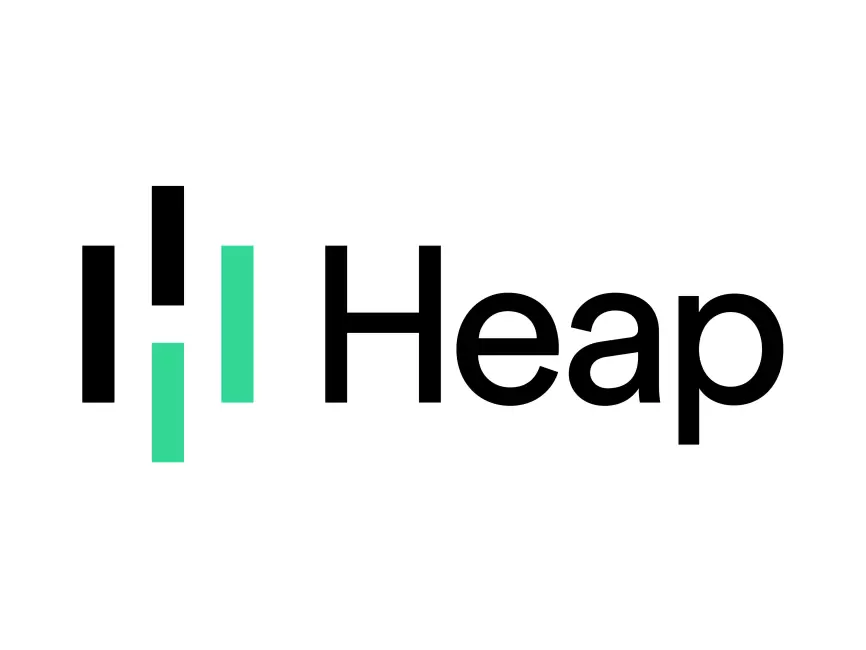Choosing the right marketing analytics tool can feel a bit like trying to pick your favorite ice cream flavor at a shop with endless options. It’s overwhelming, but oh so important because the choice can significantly impact your marketing strategy’s effectiveness. Two flavors that stand out in the crowded marketplace are HubSpot Marketing Analytics and Heap. Both offer robust features designed to sweeten your marketing efforts, but they cater to different tastes. In this deep dive, we’re going to help you find your perfect match. Let’s dig in.
| HubSpot Marketing Analytics | Heap |
|---|---|
 |  |
| G2 Score – 4.4 out of 5 stars | G2 Score – 4.4 out of 5 stars |
| TrustRadius Score – 8.5 out of 10 | TrustRadius Score – 8.2 out of 10 |
Understanding User Behavior: A Deep Dive into User Interaction Tracking
When it comes to understanding how users interact with your website or app, both HubSpot Marketing Analytics and Heap offer powerful tools, but they approach the task with slightly different methodologies. Let’s explore how these differences can influence your decision in selecting the best tool for your marketing needs.
HubSpot Marketing Analytics: A Holistic View of the Customer Journey
HubSpot Marketing Analytics prides itself on offering a comprehensive view of the customer journey. This tool doesn’t just show you numbers; it tells you stories. Through its integrated approach, HubSpot allows marketers to track user interactions across multiple channels — from emails to social media engagements, landing pages, and beyond. The platform’s strength lies in its ability to provide a unified view of a customer’s journey, making it easier for marketers to understand the impact of their efforts across different stages of the marketing funnel.
One of the key advantages of HubSpot is its seamless integration with the wider HubSpot ecosystem, including CRM, email marketing, and content management tools. This integration enables marketers to not just track user interactions but also to attribute them directly to leads and customers stored within their database. This means you can easily see how specific marketing activities influence conversions and customer retention over time. For businesses that already rely on HubSpot for other aspects of their sales and marketing, this can be a game-changer.
Heap: Real-Time Insights and Behavioral Data
On the flip side, Heap focuses on providing real-time insights into user behavior. This platform specializes in automatic data collection, meaning it captures every click, form submission, page view, and more, without the need for manual tracking setup. This comprehensive data collection approach ensures that you’re not missing out on any potential insights due to untracked interactions.
Heap’s most significant advantage is its automatic event tracking capability. Unlike HubSpot, where you might need to set up specific tracking for different interactions, Heap automatically collects data on every user action from the get-go. This feature is particularly beneficial for businesses that are in the early stages of understanding their user behavior or for those who want to explore new hypotheses about user engagement without having to set up and wait for data collection.
This automatic tracking also reduces the technical burden on teams, making it accessible for marketers who may not have in-depth technical expertise. However, the richness of automatically collected data can be overwhelming, and extracting actionable insights requires a bit of skill and patience.
Choosing What’s Right for You
Deciding between HubSpot’s integrated, customer journey-focused analytics and Heap’s real-time, behavior-centric insights comes down to your business needs. If your marketing strategy heavily relies on understanding the end-to-end customer journey and leveraging insights across a broader ecosystem of tools, HubSpot might be your best bet. Its ability to tie user interactions back to individual customer profiles and its seamless integration with sales and content tools make it a powerhouse for marketers focused on building long-term customer relationships.
Conversely, if you’re more interested in granular, real-time insights into user behavior and the flexibility to explore user interactions without predefined tracking, Heap could be the winner for you. Its automatic event tracking frees you from the constraints of manual setup, allowing you to dive deep into the data from day one.
Pricing and Scalability: Balancing Cost with Growth
As your business grows, your marketing analytics needs will evolve. Not just in terms of features and capabilities, but also when considering cost and scalability. Both HubSpot Marketing Analytics and Heap offer a range of pricing plans, but how do these plans stack up when it comes to supporting your business through different stages of growth? Let’s break it down.
| HubSpot Marketing Analytics | HubSpot’s pricing varies by package, with the Marketing Hub starting at $45 per month for the Starter package, $800 per month for the Professional package, and $3,600 per month for the Enterprise package. |
| Heap | Heap offers both Free and custom-priced Enterprise plans. The Free plan supports up to 10,000 sessions per month, while Enterprise plan pricing is based on the volume of data and specific feature requirements. |
HubSpot Marketing Analytics: Growing with Your Business
HubSpot operates on a tiered pricing model that grows with your business. Starting with a free version that offers basic analytics capabilities, HubSpot’s pricing structure scales up through several tiers, offering more advanced features and higher levels of support as you move up each tier. This approach makes HubSpot an attractive option for small businesses or startups that are just beginning to focus on their marketing efforts and need a system that can grow with them.
One of the benefits of HubSpot’s pricing model is its flexibility. As your marketing needs become more sophisticated, you can move to a higher tier without having to migrate to a different platform. Each tier unlocks additional features such as more detailed reporting, greater customization, and enhanced automation capabilities. This means you can gradually increase your investment in marketing analytics as your business sees more value from it.
However, it’s worth noting that as you move up the tiers, HubSpot can become quite expensive. The more advanced plans, which offer the full suite of marketing analytics and automation tools, are priced at a premium. For businesses that are scaling rapidly, these costs can add up but are often justified by the comprehensive insights and integration capabilities provided.
Heap: Transparent and Predictable Pricing
Heap takes a slightly different approach to pricing. It offers a free plan that’s particularly generous for startups and small businesses, with access to its core automatic event tracking features. Beyond the free plan, Heap also operates on a tiered system, but with a focus on transparency and predictability in its pricing.
What sets Heap apart is the way it customizes pricing for its paid plans based on the specific needs and usage levels of each business. While this personalized pricing can provide a tailored fit for your business, it can also make it harder to predict costs as you scale. The pricing is based on metrics such as the number of sessions or the level of data storage required, which can fluctuate significantly as your business grows or as your tracking needs become more complex.
Heap’s focus on providing a customized plan means you only pay for what you need, but it requires a clear understanding of your current and future analytics requirements. For rapidly growing businesses, this can mean regular reviews and adjustments to your plan to keep pace with your growth, which might introduce some administrative overhead.
Making the Cost-Effective Choice
When comparing the pricing and scalability of HubSpot Marketing Analytics and Heap, there are several factors to consider. HubSpot’s tiered pricing and ability to grow with your business make it a strong contender for businesses that value integration and are willing to invest more as they grow. Its predictable pricing structure also makes budget planning easier for businesses at all stages of growth.
Heap, with its customizable plans and generous free tier, offers flexibility and can be a cost-effective choice for businesses that prioritize real-time data and scalability. However, the need to regularly review and potentially adjust your plan can introduce an element of unpredictability into your budgeting.
Ultimately, the decision between HubSpot and Heap on pricing and scalability will hinge on your business’s current size, growth trajectory, and how closely you want to manage your marketing analytics budget.
Customization and Flexibility: Tailoring Your Analytics to Fit Your Needs
In the world of marketing analytics, one size rarely fits all. Different businesses have unique needs, goals, and challenges. Therefore, the ability to customize and tailor your analytics platform to fit your specific requirements is crucial. Both HubSpot Marketing Analytics and Heap offer customization options, but they approach this flexibility in different ways. Let’s delve into how each platform caters to businesses looking to customize their marketing analytics experience.
HubSpot Marketing Analytics: Customization Within a Structured Framework
HubSpot Marketing Analytics provides a robust framework for customization, allowing users to tailor various aspects of their marketing analytics to better align with their business objectives. This customization is often built around the platform’s comprehensive suite of tools, from creating custom reports to tailoring dashboards that highlight the most relevant metrics for your business.
HubSpot excels in offering customizable reporting features. Users can create custom reports from scratch or modify existing templates to better suit their needs. This flexibility allows businesses to focus on the metrics that matter most to them, whether it’s lead generation, website traffic, or email marketing performance. Moreover, HubSpot’s dashboards can be personalized to provide a quick overview of key performance indicators (KPIs), enabling marketers to monitor their campaigns’ success at a glance.
The customization capabilities of HubSpot are further enhanced when used in conjunction with its CRM platform. This integration allows for a deeper level of customization, linking marketing activities directly to sales outcomes. Users can create custom fields within the CRM to track unique customer interactions or sales processes, then analyze these through the marketing analytics tools. This seamless integration between marketing and sales data provides a more holistic view of the customer journey, allowing for more targeted and effective marketing strategies.
Heap: Flexibility Through Automatic Data Capture
Heap’s approach to customization is inherently different, primarily due to its automatic data capture model. This model allows Heap to collect a vast array of user interactions without the need for predefined events or tracking setups. This comprehensive data collection provides a solid foundation for customization, as users have access to a wide range of data points from which they can derive insights.
One of the standout features of Heap is the ability to define events and properties dynamically, without requiring code changes to your site or app. This means that marketers can customize what they track and analyze post hoc, offering unparalleled flexibility in how data is collected and analyzed. Whether you want to investigate a new user behavior pattern or adjust your tracking based on evolving business needs, Heap allows for this level of flexibility without involving your development team.
Heap’s concept of virtual events takes customization a step further. Users can create virtual events to track specific user paths or actions without the need for direct tracking codes. This allows for complex analyses of user behavior, funnel conversion, and more, all tailored to the unique needs of your business. Virtual events enable businesses to dig deeper into their data, uncovering insights that wouldn’t be possible through standard event tracking alone.
Finding the Right Fit for Your Business
When it comes to customization and flexibility, both HubSpot Marketing Analytics and Heap offer compelling options, but your choice will depend on your business’s specific needs. If your marketing strategy demands tight integration with sales data and you value the ability to customize reports and dashboards within a structured framework, HubSpot may be the better choice. Its seamless integration with the CRM and comprehensive suite of tools offer a powerful way to tailor your marketing analytics.
On the other hand, if you’re looking for the ability to explore your data without limitations and appreciate the flexibility to define and refine what you track on the fly, Heap’s automatic data capture and dynamic event definitions offer a level of flexibility that’s hard to match. Choosing between these two powerful tools boils down to the type of customization and flexibility your business needs to thrive in a competitive landscape.

Related: Check out our free SEO suite

Data Accuracy and Reliability: Ensuring Trust in Your Analytics
In the digital marketing world, the accuracy and reliability of your data aren’t just important; they’re everything. Making decisions based on inaccurate or unreliable data can lead to wasted resources, missed opportunities, and misguided strategies. Let’s explore how HubSpot Marketing Analytics and Heap ensure the accuracy and reliability of the data they provide, highlighting their approaches and technologies designed to maintain data integrity.
HubSpot Marketing Analytics: Precision Through Integration
HubSpot’s approach to ensuring data accuracy and reliability largely stems from its integrated platform. By combining marketing, sales, and customer service data into one unified system, HubSpot helps reduce the chances of data silos and inconsistencies that can plague organizations using multiple disparate tools.
One of the key benefits of HubSpot’s integrated approach is the consistency of data across all marketing channels. Whether it’s email marketing, social media, or website interactions, HubSpot ensures that data collected is consistent and reliable. This is particularly important for businesses that rely on multi-channel marketing strategies, as it allows for accurate cross-channel performance analysis and attribution modeling.
HubSpot also offers robust tools for data cleansing and duplication management, essential for maintaining data accuracy. These features help marketers clean up their databases, merge duplicate contacts, and ensure that the data used for analytics is as accurate and reliable as possible. This focus on data hygiene is crucial for businesses that rely on precise targeting and segmentation strategies.
Heap: Accuracy Through Automation
Heap’s philosophy on data accuracy and reliability is built around its automatic data collection methodology. By capturing every interaction without the need for manual event tracking setup, Heap minimizes the risk of human error, ensuring a comprehensive dataset that’s both accurate and reliable.
The foundation of Heap’s approach is its ability to capture data automatically on every user interaction. This eliminates the possibility of missing out on important data points due to tracking not being set up or being set up incorrectly. By capturing everything, Heap ensures that businesses have access to a complete dataset, enabling more accurate and reliable analysis.
Heap also provides tools for real-time data verification, allowing users to instantly check the accuracy of their data. This feature is particularly useful for identifying and correcting any potential issues quickly, ensuring that the data remains reliable for decision-making processes.
Addressing the Challenges of Data Overload
While both platforms offer robust solutions for ensuring data accuracy and reliability, they also present challenges in terms of data overload. Heap’s automatic collection of every interaction can lead to an overwhelming amount of data, which, if not managed properly, can make it difficult to extract actionable insights. On the other hand, HubSpot’s integrated approach, while ensuring data consistency, requires a strong grasp of the platform to effectively manage and interpret the data collected across different channels.
Ensuring Trust in Your Analytics
The accuracy and reliability of your marketing analytics data are critical for making informed decisions. HubSpot Marketing Analytics and Heap offer distinct approaches to ensuring data integrity. HubSpot’s integrated platform and focus on data hygiene offer a structured way to maintain data accuracy, particularly useful for businesses with complex multi-channel strategies. Heap’s automatic data capture and real-time verification provide a comprehensive and error-minimizing approach, ideal for businesses that prioritize complete data collection and flexibility.
Selecting between HubSpot and Heap for data accuracy and reliability comes down to your business’s specific needs and how you prioritize the balance between comprehensive data collection and the ease of managing and interpreting that data.
Integration Capabilities: Enhancing Your Marketing Stack
In today’s digital marketing landscape, the power of a tool often lies not just in its standalone capabilities but also in its ability to integrate seamlessly with other tools in your marketing stack. Whether it’s your CRM, email marketing platform, social media tools, or customer support software, integration capabilities can significantly amplify your analytics insights and operational efficiency. Let’s compare how HubSpot Marketing Analytics and Heap stack up in terms of their integration capabilities.
HubSpot Marketing Analytics: The Hub of Your Marketing Stack
HubSpot has built its reputation on being not just a tool but a platform that acts as the central hub for your inbound marketing activities. Its strength in integration lies in its native ecosystem, which includes a wide range of tools covering CRM, email marketing, social media management, content management, and more.
Beyond its native ecosystem, HubSpot offers a plethora of third-party integrations. These integrations cover everything from analytics tools like Google Analytics to advertising platforms like Facebook Ads and Google Ads, collaboration tools such as Slack, and even specialized tools like Shopify for e-commerce. The HubSpot App Marketplace is continually expanding, offering businesses the flexibility to connect their marketing analytics with a vast array of other tools.
One of the key advantages of HubSpot’s integration capabilities is the ease with which data flows between HubSpot and other tools. This seamless data exchange ensures that marketers can track customer interactions across multiple channels and platforms, all within HubSpot’s interface. This centralized data collection not only simplifies analysis but also enhances the ability to take action based on insights, such as segmenting email lists or personalizing website content based on user behavior.
Heap: Flexible Integrations for a Customized Stack
While Heap may not offer the same breadth of native tools as HubSpot, it compensates with robust integration capabilities that allow it to fit flexibly into your existing marketing stack. Heap focuses on capturing detailed user behavior data, making its integration with other tools crucial for leveraging this data across your marketing efforts.
Heap’s integrations are particularly strong in the areas of data management and analytics. This includes connections with data warehouses like Amazon Redshift, BigQuery, and Snowflake, allowing businesses to combine Heap’s rich behavioral data with other data sources for deeper analysis. Additionally, Heap integrates with visualization tools like Tableau and Looker, enabling sophisticated data visualization and reporting.
For businesses with specific needs or those using niche tools, Heap provides the capability for custom integrations through its API. This level of flexibility ensures that regardless of the tools in your marketing stack, Heap’s data can be leveraged to enhance your marketing insights and actions. This custom integration capability is particularly valuable for companies with a strong in-house development team or those using bespoke systems.
Choosing the Best Integrator for Your Needs
When it comes to integration capabilities, your choice between HubSpot Marketing Analytics and Heap will depend on your current marketing stack and your strategic priorities. If you’re looking for a comprehensive, all-in-one platform that can serve as the foundation of your marketing activities, HubSpot’s wide range of native and third-party integrations make it an attractive option. Its seamless ecosystem is ideal for businesses that value simplicity and coherence in their marketing operations.
Conversely, if your needs center around leveraging detailed user behavior data across a customized set of tools, Heap’s strong analytics-focused integrations and custom API capabilities offer the flexibility to tailor your marketing stack to your precise requirements. Both platforms offer robust integration capabilities, but the right choice will hinge on whether you prefer an all-encompassing ecosystem or the flexibility to craft a more customized, data-centric marketing stack.
Data Visualization and Reporting: Turning Data into Actionable Insights
In the realm of marketing analytics, the ability to visualize and report on data effectively can make the difference between data that’s merely informative and data that drives action. Both HubSpot Marketing Analytics and Heap offer tools for data visualization and reporting, but they cater to different preferences and needs. Let’s delve into how these platforms enable businesses to turn raw data into actionable insights through their visualization and reporting capabilities.
HubSpot Marketing Analytics: Comprehensive Reporting for Strategic Decision-Making
HubSpot Marketing Analytics is designed to offer a user-friendly experience when it comes to data visualization and reporting. With a focus on providing actionable insights, HubSpot enables marketers to easily create, customize, and share reports that can inform strategy and tactics.
HubSpot’s dashboards are highly intuitive, allowing users to drag and drop different widgets to customize their view. This customization capability makes it easy for marketers to focus on the metrics that matter most to their specific goals. Whether it’s website traffic, lead generation metrics, or email marketing performance, HubSpot allows you to visualize these metrics in a clear and digestible format.
Moreover, HubSpot offers a variety of pre-built report templates, saving time and making it easier for users to start analyzing their data. These templates can be further customized, offering flexibility while also providing guidance for users who may not be data experts.
One of the strengths of HubSpot’s reporting is its action-oriented approach. Reports are not just about presenting data; they’re designed to highlight opportunities for optimization and growth. For example, HubSpot can help identify which marketing channels are generating the most leads or which content pieces are performing best, enabling marketers to allocate resources more effectively.
Heap: In-depth Behavioral Insights through Custom Visualization
Heap’s approach to data visualization and reporting emphasizes depth and flexibility, particularly when it comes to understanding user behavior. With its comprehensive data capture, Heap allows users to dig deep into user interactions and visualize pathways through their product or service.
Heap’s interface supports extensive customization in reporting and visualization, giving users the power to analyze data in ways that are most meaningful to their business. The platform enables the creation of custom funnels, cohorts, and segments, allowing for detailed analysis of user behavior patterns. This level of granularity is invaluable for businesses looking to optimize user experiences and improve conversion rates.
Moreover, Heap’s emphasis on self-service analytics means that users can explore data without needing extensive technical knowledge. This democratization of data analysis empowers teams across the organization to derive insights and make data-driven decisions.
Heap excels in providing real-time data, which is crucial for agile marketing efforts. The ability to instantly see the effects of changes or new initiatives allows businesses to be more responsive and adaptive. This real-time reporting capability ensures that strategies can be adjusted on the fly, based on the latest user behavior insights.
Choosing the Right Tool for Data-Driven Insights
When deciding between HubSpot Marketing Analytics and Heap for data visualization and reporting, consider your team’s expertise and your specific needs for data analysis. If your priority is to have an intuitive, user-friendly platform that offers comprehensive reports and dashboards with minimal setup, HubSpot is likely the better choice. Its action-oriented reporting is suited for businesses focused on optimizing their marketing strategies across various channels.
Conversely, if you’re looking for depth and flexibility in analyzing user behavior, with the ability to customize reports and explore data in real-time, Heap offers a powerful solution. Its capabilities are especially beneficial for businesses that prioritize understanding and optimizing the user journey. Both platforms provide robust tools for turning data into actionable insights, but the best choice will depend on your specific needs for data analysis, reporting, and visualization.
Conclusion
Choosing between HubSpot Marketing Analytics and Heap for your marketing analytics needs isn’t a straightforward decision; it deeply depends on your unique business requirements, existing marketing stack, and strategic goals. HubSpot shines as a comprehensive, all-in-one platform ideal for those seeking an integrated approach to manage the entire customer journey across multiple channels. Its strength lies in its seamless ecosystem, making it perfect for businesses aiming for cohesion and ease of use.
On the other hand, Heap offers unparalleled flexibility and detailed insights into user behavior, suited for those prioritizing data-driven decisions and customization in their marketing strategies. Whether you lean towards the structured, holistic approach of HubSpot or the granular, flexible analytics of Heap, the best choice ultimately aligns with what will empower your team to craft compelling, data-informed marketing campaigns that resonate with your audience and drive your business forward.
Read Next:
- 13+ Key Elements of a Robust Software Development Agreement
- How Game-Changing is the Digital Rupee going to be?
- Recent Trends in Mergers and Acquisitions in India (2024)
- Important FEMA Provisions governing Foreign Exchange Control in India
- 31+ Top Social Media Management tools Compared! (2023)






















Comments are closed.